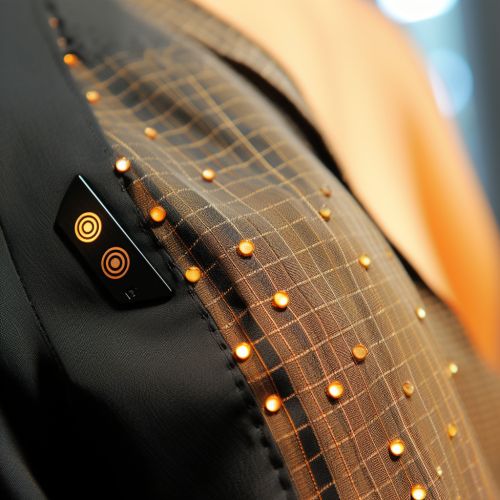Smart clothing
Introduction
Smart clothing, also known as e-textiles or electronic textiles, refers to garments that have been enhanced with technology to provide added functionality beyond that of traditional clothing. These garments can interact with the environment or the wearer, providing benefits such as health monitoring, communication capabilities, or aesthetic appeal.
History
The concept of smart clothing has its roots in the field of wearable technology, which began to gain traction in the late 20th century. Early examples of wearable technology were primarily focused on providing users with portable computing power. However, as technology advanced, the focus shifted towards integrating technology directly into clothing.
Technology
Smart clothing incorporates a variety of technologies, including microelectronics, nanotechnology, and biotechnology. These technologies are used to embed sensors and other electronic components into the fabric of the clothing.


Types of Smart Clothing
There are several types of smart clothing, each designed to serve a specific purpose. These include:
- Fitness Trackers: These garments are designed to monitor the wearer's physical activity and provide feedback on their performance. They often include sensors to measure heart rate, distance traveled, and calories burned.
- Health Monitors: These garments are designed to monitor the wearer's health and provide alerts if any abnormalities are detected. They can monitor vital signs such as heart rate, blood pressure, and body temperature.
- Protective Clothing: This type of smart clothing is designed to protect the wearer from environmental hazards. This can include clothing that changes color in response to harmful chemicals, or clothing that can stiffen on impact to provide additional protection.
- Fashion Tech: This category includes clothing that incorporates technology for aesthetic purposes. This can include clothing that changes color or pattern, or clothing that lights up.
Applications
Smart clothing has a wide range of applications, from healthcare to sports and fitness, to fashion and entertainment. In the healthcare sector, smart clothing can be used to monitor patients' vital signs and alert medical professionals if there are any abnormalities. In the sports and fitness sector, smart clothing can provide athletes with detailed feedback on their performance, helping them to improve their technique and avoid injury. In the fashion and entertainment sector, smart clothing can provide a unique and interactive experience for the wearer.
Future of Smart Clothing
The future of smart clothing is likely to see further integration of technology into everyday garments. This could include clothing that can adapt to the wearer's needs, such as clothing that can change its insulating properties based on the wearer's body temperature, or clothing that can change its appearance based on the wearer's mood or environment.
